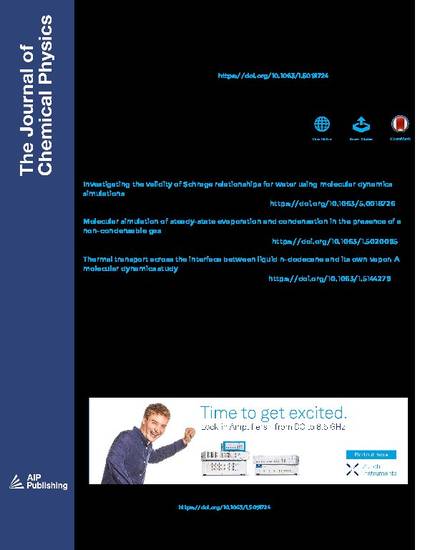
Article
Mass Accommodation at a High-Velocity Water Liquid-Vapor Interface
Journal of Chemical Physics
Abstract
We Use Molecular Dynamics to Determine the Mass Accommodation Coefficient (MAC) of Water Vapor Molecules Colliding with a Rapidly Moving Liquid-Vapor Interface. This Interface Mimics Those Present in Collapsing Vapor Bubbles that Are Characterized by Large Interfacial Velocities. We Find that at Room Temperature, the MAC is Generally Close to Unity, and Even with Interfaces Moving at 10 Km/s Velocity, It Has a Large Value of 0.79. using a Simplified Atomistic Fluid Model, We Explore the Consequences of Vapor Molecule Interfacial Collision Rules on Pressure, Temperature, and Density of a Vapor Subjected to an Incoming High-Velocity Liquid-Vapor Interface.
Department(s)
Mechanical and Aerospace Engineering
Document Type
Article - Journal
Document Version
Final Version
File Type
text
Language(s)
English
Rights
© 2023 American Institute of Physics, All rights reserved.
Publication Date
4-21-2019
Publication Date
21 Apr 2019
PubMed ID
31005070
Disciplines
Citation Information
J. Nie, A. Chandra, Z. Liang and P. Keblinski. "Mass Accommodation at a High-Velocity Water Liquid-Vapor Interface" Journal of Chemical Physics Vol. 150 Iss. 15 (2019) ISSN: 0021-9606 Available at: http://works.bepress.com/zhi-liang/28/

Empire State Development's Division of Science, Technology and Innovation, Grant None